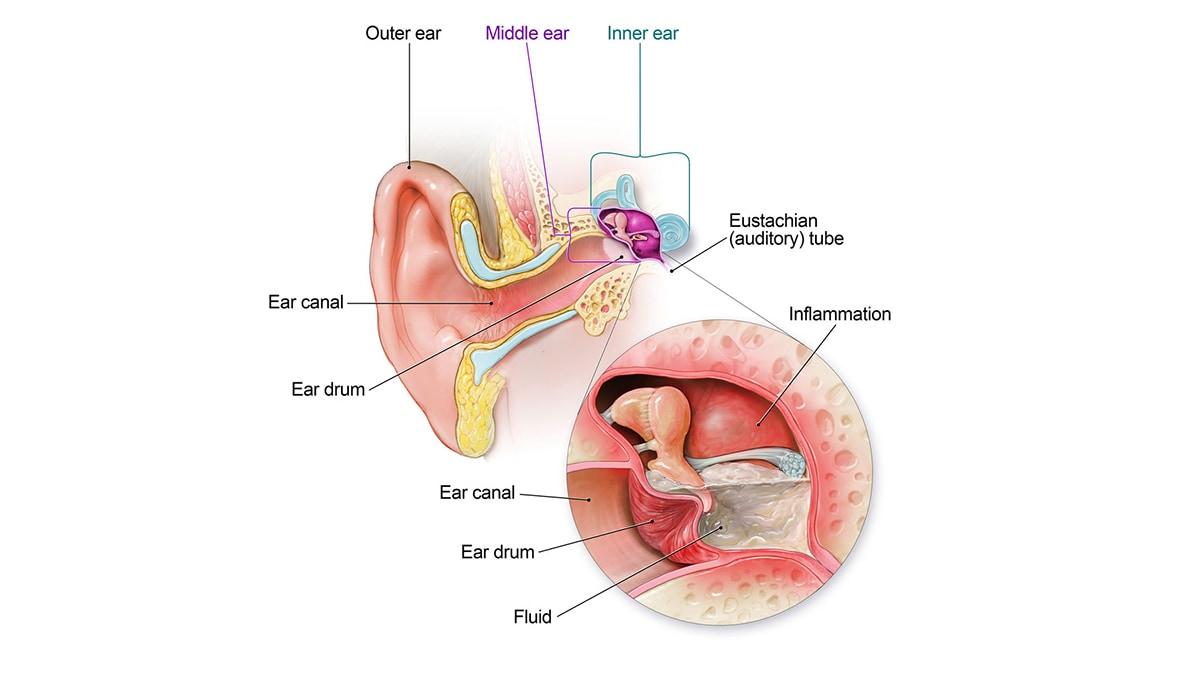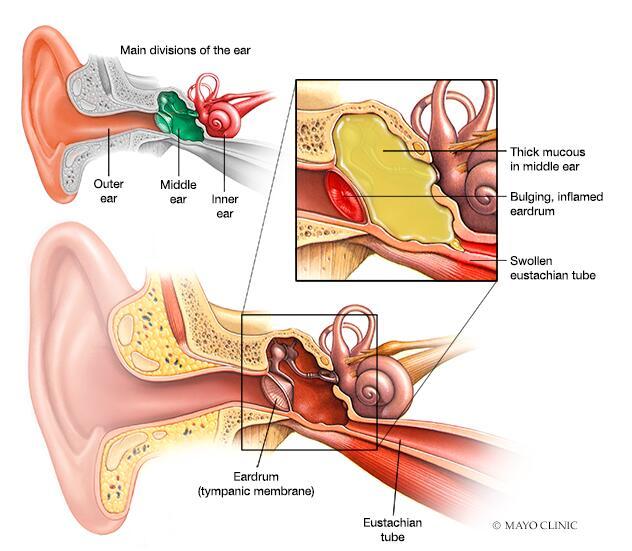Title: Understanding Ear Infection Treatment: A Comprehensive Guide
Introduction:
Imagine the world through the eyes of a child, their laughter echoing like a melody, until suddenly, that joyful sound is interrupted by the sting of discomfort in their ear. Ear infections, a common ailment that can affect individuals of all ages, often emerge unexpectedly, turning vibrant days into restless nights. While the pain and pressure can be distressing, understanding the landscape of ear infection treatment is essential for reclaiming comfort and peace. In this article, we will explore the various treatment options available, from home remedies to medical interventions, shedding light on how to navigate the path to recovery. Whether you’re a concerned parent or someone seeking relief, our guide aims to equip you with the knowledge needed to address this common health challenge effectively. Join us as we delve into the intricacies of ear infections and discover how to silence the discomfort that can disrupt our daily lives.
Understanding Ear Infections and Their Causes
Ear infections are common ailments that can affect individuals of all ages, although they are particularly prevalent in children. These infections occur when bacteria or viruses invade the middle ear, leading to inflammation and fluid buildup. Understanding the causes of ear infections is crucial for effective treatment. Some of the primary factors include:
- Upper respiratory infections: Colds and sinus infections can lead to congestion and block the eustachian tube, which connects the throat to the middle ear.
- Allergies: Allergic reactions can cause swelling and irritation, making it harder for fluids to drain from the ear.
- Anatomy: Children are more susceptible to ear infections due to their shorter and more horizontal eustachian tubes.
When an infection occurs, symptoms can range from mild discomfort to severe pain, often accompanied by fluid drainage or fever. Identifying these symptoms allows for timely intervention, which can prevent complications. Treatment options typically include:
| Type of Treatment | Description |
|---|---|
| Antibiotics | Used for bacterial infections, these medications help eliminate the bacteria causing the infection. |
| Pain relievers | Over-the-counter medications like ibuprofen can alleviate discomfort associated with ear infections. |
| Warm compresses | Applying a warm cloth to the ear can provide soothing relief from pain. |
Recognizing Symptoms for Timely Intervention
Identifying the signs of an ear infection can be crucial for effective treatment and recovery. Common symptoms to watch for include:
- Pain or discomfort in the ear, which can be constant or come and go.
- Difficulty hearing or a feeling of fullness in the ear.
- Fluid drainage from the ear, which might be yellow or bloody.
- Fever, especially in children, can indicate an infection.
- Persistent coughing or nasal congestion can also accompany ear infections.
If you notice any of these symptoms, particularly in children, it’s important to seek medical attention promptly. Early diagnosis can prevent complications and lead to a more effective treatment plan. Consider the following when visiting a healthcare provider:
| Considerations | Questions to Ask |
|---|---|
| Severity of Symptoms | How long have the symptoms persisted? |
| Medical History | Have there been previous ear infections? |
| Home Remedies | What treatments have been attempted at home? |
| Allergies | Are there any known allergies to medications? |
Exploring Conventional Treatment Options
When it comes to treating ear infections, conventional methods often provide effective relief and promote healing. Antibiotics are frequently prescribed to combat bacterial infections, particularly in cases where symptoms are severe or persistent. These medications are designed to eliminate harmful bacteria, allowing the body to recover more swiftly. However, it’s essential to avoid the misuse of antibiotics, as overuse can lead to antibiotic resistance. Pain relievers, such as ibuprofen or acetaminophen, are also recommended to manage discomfort and reduce fever, ensuring that the patient remains comfortable during recovery.
In addition to medication, certain home care strategies can support conventional treatments. Here are a few helpful tips:
- Apply a warm compress to the affected ear to alleviate pain.
- Stay hydrated, as fluids can help thin mucus and promote drainage.
- Rest adequately to bolster the immune system during recovery.
Furthermore, for those with recurrent ear infections, healthcare providers may suggest preventive measures or refer patients to an ear, nose, and throat (ENT) specialist for further evaluation. This multidisciplinary approach ensures a comprehensive strategy tailored to individual needs, enhancing the overall efficacy of treatment.
Natural Remedies for Relief and Recovery
Delving into nature’s arsenal can provide soothing relief for ear infections, harnessing the power of natural ingredients to promote healing. Essential oils, such as tea tree oil and lavender oil, have potent antimicrobial properties that can combat the infection while reducing inflammation. Diluting these oils in a carrier oil, like coconut oil, and gently massaging around the ear can be both effective and comforting. Additionally, a warm compress applied to the ear can enhance blood flow, easing pain and aiding in recovery. Natural herbs like garlic possess strong antiviral and antibacterial qualities; incorporating garlic oil drops in the ear can help alleviate discomfort and fight off the infection.
Another approach is to ensure your immune system is supported through proper nutrition. Foods rich in vitamin C, such as citrus fruits and leafy greens, can bolster your defenses against infections. Consuming probiotics, found in yogurt and fermented foods, may also balance the gut flora, which plays a critical role in overall immunity. Staying hydrated is crucial, as it helps thin out mucus and promotes drainage from the ear canal. Consider a soothing herbal tea, like ginger or chamomile, which not only provides comfort but can also reduce inflammation. Here’s a simple table outlining some natural remedies and their benefits:
| Natural Remedy | Benefits |
|---|---|
| Tea Tree Oil | Antimicrobial properties, reduces inflammation |
| Garlic Oil | Antiviral and antibacterial, eases discomfort |
| Warm Compress | Increases blood flow, alleviates pain |
| Citrus Fruits | Rich in vitamin C, boosts immunity |
Preventative Measures to Avoid Future Infections
To significantly reduce the risk of future ear infections, it’s essential to adopt a few proactive strategies in your daily routine. Regular hygiene practices can play a pivotal role. Consider the following measures:
- Maintain Ear Hygiene: Clean your outer ear gently and avoid using cotton swabs, which can push wax deeper into the ear canal.
- Avoid Moist Environments: Keep your ears dry, especially after swimming or bathing. Use earplugs or a swim cap when necessary.
- Stay Up-to-Date on Vaccinations: Ensure that you and your children receive vaccinations, such as the flu and pneumococcal vaccines, to prevent respiratory infections that can lead to ear issues.
Additionally, managing allergies and respiratory conditions can help minimize the chances of developing ear infections. Pay attention to environmental triggers and take appropriate steps to reduce exposure. Some effective practices include:
| Allergy Management Tips | Benefits |
|---|---|
| Regular Cleaning | Reduces dust and allergen buildup. |
| Use Air Purifiers | Improves air quality in your home. |
| Consult an Allergist | Identifies allergens and provides tailored treatment plans. |
When to Seek Professional Medical Help
Understanding when to consult a healthcare professional for an ear infection is crucial for effective treatment and recovery. If you or a loved one experiences any of the following symptoms, it’s essential to seek medical advice:
- Severe Pain: Intense or worsening pain that does not improve with over-the-counter medications.
- Fever: A high fever, particularly above 102°F (39°C), that persists for more than a couple of days.
- Fluid Drainage: Fluid or pus leaking from the ear, especially if it is accompanied by a foul smell.
- Hearing Loss: Sudden or significant changes in hearing ability.
- Recurring Infections: Multiple ear infections within a short period, which may indicate a more serious underlying issue.
Additionally, specific populations may require more immediate attention. For instance, infants and young children are more susceptible to complications, so any signs of distress should prompt a consultation. Consider the following guidelines:
| Age Group | Recommended Action |
|---|---|
| Infants (under 6 months) | Seek medical help immediately |
| Children (6 months to 2 years) | Consult if symptoms persist for more than 24 hours |
| Adults | Visit a doctor if symptoms worsen or last longer than 3 days |
Q&A
Q&A: Understanding Ear Infection Treatment
Q1: What is an ear infection?
A1: An ear infection, or otitis media, occurs when microorganisms invade the middle ear, leading to inflammation and fluid buildup. This can be triggered by colds, allergies, or other respiratory issues, resulting in discomfort, pain, and sometimes fever.
Q2: What are the common symptoms of an ear infection?
A2: Symptoms can vary but often include persistent ear pain, difficulty hearing, fluid drainage from the ear, fever, irritability in children, and a feeling of fullness or pressure in the ear.
Q3: How is an ear infection diagnosed?
A3: A healthcare provider typically diagnoses an ear infection through a physical examination. They may use an otoscope to look into the ear canal and assess the eardrum for signs of inflammation or fluid.
Q4: What are the treatment options for an ear infection?
A4: Treatment can vary based on the severity and type of ear infection. Common options include:
- Watchful waiting: For mild infections, especially in children, healthcare providers may recommend monitoring symptoms for a few days.
- Antibiotics: If the infection is bacterial and symptoms are severe or persistent, antibiotics may be prescribed.
- Pain relief: Over-the-counter pain relievers, such as acetaminophen or ibuprofen, can help alleviate discomfort.
- Warm compresses: Applying a warm cloth to the affected ear can provide additional comfort.
Q5: Are there any home remedies that can help?
A5: While home remedies should not replace medical treatment when necessary, some may help ease symptoms:
- Warm compress: As mentioned, applying warmth can soothe pain.
- Hydration: Staying well-hydrated can help thin mucus and promote drainage.
- Steam inhalation: Breathing in steam can relieve congestion and pressure in the ear.
Q6: When should I see a doctor for an ear infection?
A6: It’s advisable to consult a healthcare provider if symptoms worsen, persist for more than a couple of days, or if there’s significant fever, swelling, or drainage of pus. In young children, seek medical attention promptly if they display signs of distress or discomfort.
Q7: Can ear infections be prevented?
A7: While not all ear infections are preventable, certain strategies can reduce the risk:
- Vaccination: Keeping up with vaccinations, particularly the pneumococcal vaccine, can lower the risk of infections.
- Good hygiene: Regular handwashing and avoiding close contact with sick individuals can help prevent the spread of germs.
- Avoiding smoke exposure: Keeping children away from secondhand smoke can reduce the likelihood of respiratory infections.
Q8: What is the outlook for someone with an ear infection?
A8: Most ear infections resolve without complications within a few days to weeks, especially with appropriate treatment. While some individuals may experience recurrent infections, many outgrow them as their immune systems strengthen. Consulting a healthcare provider ensures the right approach for effective recovery.
Final Thoughts
navigating the realm of ear infections can often feel like traversing a labyrinth, filled with twists, turns, and the occasional dead end. However, understanding the various treatment options available empowers patients and caregivers alike to make informed decisions. From the soothing embrace of antibiotics to the gentle touch of home remedies, each approach holds the potential to alleviate discomfort and restore well-being. Always remember, the journey to recovery is best undertaken with the guidance of a healthcare professional, ensuring a tailored path that aligns with individual needs. As we bid farewell to the complexities of ear infections, may knowledge and vigilance serve as your steadfast companions, leading to clearer days and healthier ears ahead.
